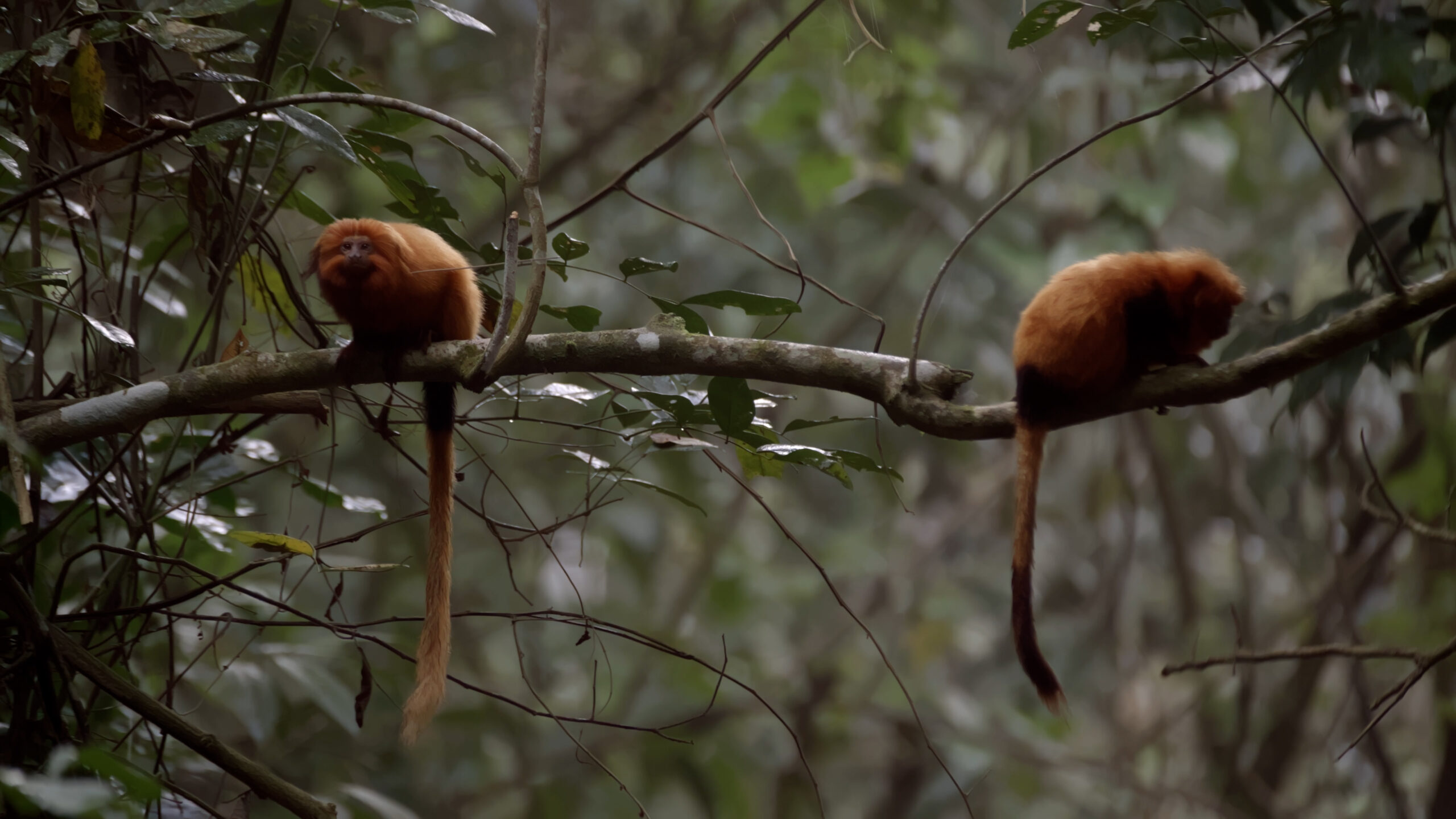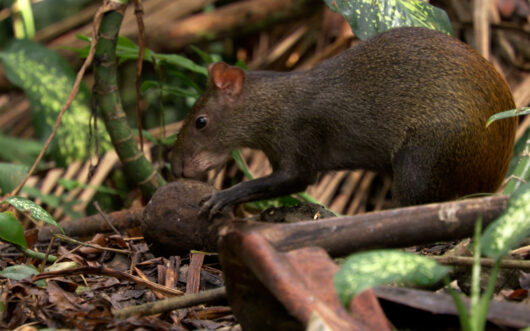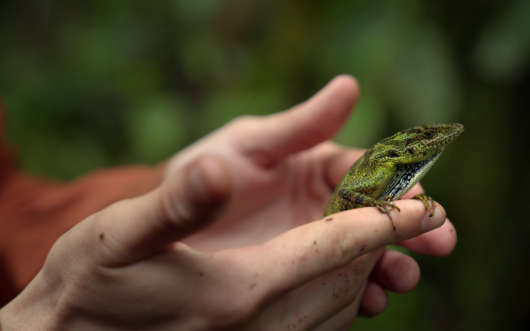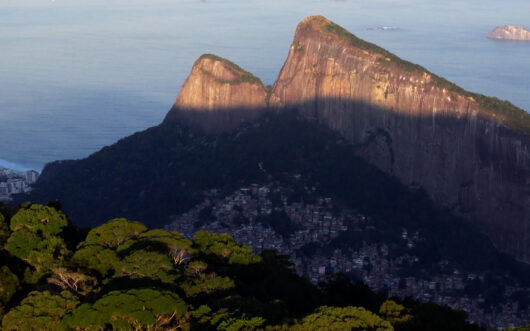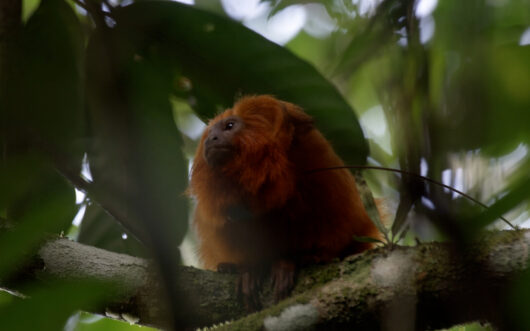Bring primates, rainforest biodiversity, and conservation science into your classroom.
Explore how scientists in Brazil are working to save the golden lion tamarin from extinction by restoring forests, managing wild populations, and even developing vaccines to protect against deadly diseases. This educator guide supports classroom discussion, NGSS-aligned learning, and hands-on opportunities for student engagement.
GRADES
9 – 12+
SUBJECTS
Biology, Storytelling, Ecology
Episode Overview
“é restaurar o hábitat para mostrar que, sim, é possível para fazer a espécie mais resiliente a eventuais novas doenças que possam ocorrer no futuro.”
“We want to show that restoring the habitat is possible, making the species more resilient to any new diseases that may occur in the future.” Luis Paulo Ferraz, Executive Director, Associação Mico-Leão-Dourado (Golden Lion Tamarin Association)
In One Golden Chance we learn about a global and decades-long effort to save the golden lion tamarin from almost certain extinction in the wild. We meet zoologists, conservation biologists, and a virologist who are working together to maintain a wild and self-sustaining population of tamarins, an iconic species of the Brazilian Atlantic forest ecosystem.
Focus Questions
- What are some of the major anthropogenic (human caused) threats to the Earth’s biodiversity and why?
- What are the differences between in-situ and ex-situ conservation efforts and what are some example of each strategy?
- What role does genetic diversity play in the ability of a population to survive in a rapidly changing environment?
- What is captive breeding and what role does it play in the conservation of endangered and threatened species?
- Why is it important to help a species avoid unnaturally small populations?
Key Concepts
- Threatened and Endangered Species: The International Union for the Conservation of Nature (IUCN) lists more than 44,000 species threatened with extinction. Habitat loss and destruction and agriculture are the major threats for more than 85% of these species. The IUCN also lists disease as a major factor contributing to the endangerment of species and the overall loss of biodiversity.
- Genetic diversity: When the numbers of individuals of a species reaches low levels genetic drift can begin to erode the genetic diversity in the population. Low genetic diversity can increase the susceptibility of a population to disease.
- Extinction vortex: When a population shrinks it can become susceptible to extinction through genetic drift and inbreeding. These two processes can reduce the overall fitness of the population and lead to a downward spiral of further population declines. This extinction vortex was affecting the golden lion tamarin population in the 1960s as the population plummeted to below 200 individuals.
- Captive breeding: Breeding animals in a controlled environment, like zoos or conservation facilities, can protect species from extinction, enhance their health, and potentially lead to reintroduction to the wild. The captive breeding program we learn about in One Golden Chance also involved selectively breeding captive golden lion tamarins to maintain their genetic diversity.
- Insurance population: A major emphasis of captive breeding programs is to maintain a breeding group of endangered plants or animals in captivity to ensure that the species will not go extinct, even if it disappears in the wild. Dozens of insurance populations of golden lion tamarins are maintained at zoos and conservation facilities around the world.
- Restoration ecology: Centuries of unsustainable human activities have degraded the Earth’s terrestrial, freshwater, and marine ecosystems. Some terrestrial areas that used to contain expansive, continuous habitat have been reduced to a few islands of vegetation that cannot support many species or protect vulnerable ones. Restoration ecology is focused on reversing this degradation by restoring natural habitats and processes, including providing connectivity between habitats so individuals can move from one breeding population to another thereby increasing genetic diversity.
- Conservation biology: The practice of conservation biology recognizes the intrinsic value of the Earth’s natural diversity of organisms. Conservation biology works to understand how the natural world operates, how humans affect nature, and how we can use collective scientific and cultural knowledge to conserve Earth’s biological diversity.
- In-situ and ex-situ conservation: In-situ conservation mainly focuses on protecting a species in its natural habitat whereas ex-situ conservation focuses on off-site captive conservation. The golden lion tamarin captive breeding program exemplifies a successful and hopeful integrative conservation approach, combining ex-situ breeding and vaccination management with in-situ reintroduction and habitat preservation.
Curriculum Connections
NGSS
- HS-LS2 Ecosystems: Interactions, Energy, and Dynamics
- LS2.A: Interdependent Relationships in Ecosystems
- LS2.C: Ecosystem Dynamics, Functioning, and Resilience
- LS2.D: Social Interactions and Group Behavior
- HS-LS3 Heredity: Inheritance and Variation of Traits
- LS3.A: Inheritance of Traits
- HS-LS4 Biological Evolution: Unity and Diversity
- LS4.B: Natural Selection
- LS4.C: Adaptation
- ETS1.B: Developing Possible Solutions
For complete list of curriculum connections including AP & IB standards, refer to full PDF.
